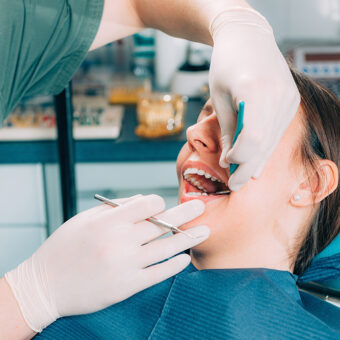Chipped, Fractured or Cracked Teeth
It is not uncommon for a tooth to sustain a chip, crack or fracture. It may happen simply from biting down on a piece of ice, chewing on a pencil, or sustaining trauma such as a direct blow to the face and mouth. The damage to a tooth can range from a minor craze line or a small chip of the dental enamel to a more extensive fracture of the tooth that can even go so far as to fracture the root or split the tooth. Based upon the extent of damage to the fractured or cracked tooth, treatment may simply involve placing a suitable restoration such as a filling or crown or a root canal procedure along with a restoration. When the damage is extensive, an extraction is sometimes required.
Dentoalveolar Injury
Dentoalveolar injuries refer to traumatic injuries involving the teeth and the bone surrounding the teeth. These injuries can include teeth that have been dislodged or moved partially out of their sockets, with or without a segment of the adjacent bone, or an avulsion, which means that a tooth has been completely “knocked out” of its socket. In these situations, immediate dental care to reposition and stabilize the involved teeth and/or put the bone back into the correct anatomical positions is required. Beyond the routine post op care to check for tissue healing, the involved teeth are typically followed for a longer period of time to check for subsequent nerve involvement or other issues that may require additional care.

